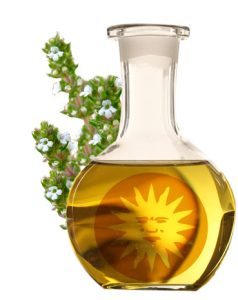Linanol Thyme Essential Oil (Thymus Zygis)
At Esencias Lorente, we are pleased to introduce our essence of linalool thyme (Thymus zygis), an exceptional aromatic option known for its smoothness and therapeutic properties. Carefully extracted from fresh linalool thyme leaves through a specialized distillation process in stainless steel stills, our essence captures the characteristic fresh and herbal aroma of this particular variety of thyme.
With its gentle aroma and therapeutic properties, linalool thyme essence is valued for its ability to promote relaxation and well-being. Widely used in aromatherapy and personal care products, linalool thyme essential oil adds a soothing and comforting note to a variety of products, from massage oils to creams and lotions.
At Esencias Lorente, we are committed to providing linalool thyme essence of the highest quality, produced with care and attention to every detail. Additionally, we are proud to have recognized quality certifications, such as ECO CERT certification and kosher certification, which support our dedication to quality and sustainability at every stage of our production process.
Description: Liquid aspect essential oil as well as yellow coloured and linanolic smell. Bloom: As red thyme, it grows wildly in June and July.
Growth: In the Baza Mountains.
Composition: It is mainly composed by Linalol and in a lesser extent by Terpineol, B-Myrcene and Alpha-Pinene.
Use: Mostly used for cosmetic and perfumery.
TECHNICAL TABLE OF LINALOOL THYME ESSENTIAL OIL
ORGANOLEPTIC INFORMATION
PHYSICO-CHEMICAL INFORMATION
CHEMICAL COMPOSITION (Active principles)
Linalool thyme, derived from the Thymus zygis plant, is a thyme variant known for having a higher linalool content compared to other thyme varieties. Linalool is a compound that imparts specific properties to the essential oil. While the exact composition can vary, some of the typical chemical components of linalool thyme essential oil may include:
- Linalool: The main and distinctive component, found in higher concentration in this type of thyme. It is known for its relaxing, soothing properties, and its floral aroma.
- Cineole (Eucalyptol): Although in lesser concentration compared to other thyme varieties, cineole can provide beneficial properties for the respiratory system and decongestion.
- Terpineol: Contributes to the aroma and may have antibacterial and antifungal properties.
- Alpha-terpineol: Similar to terpineol, with aromatic properties and potential health benefits.
- Carvacrol: Though in smaller amounts than in other varieties, it may be present and contribute antimicrobial and antioxidant properties.
- Thymol: Another component that may be present in smaller amounts and have antimicrobial properties.
Description of Linalool Thyme:
Linalool thyme, scientifically known as Thymus zygis, is a thyme variant characterized by its notably high content of linalool, a compound that gives it particular properties and distinguishes it from other thyme species. It belongs to the Lamiaceae family and is native to Mediterranean regions.
This thyme variant shares similar traits with other thyme species, presenting a perennial shrub with woody, branched stems. Its leaves, grey-green in color, are small, opposite, lanceolate or oval, and emit a characteristic aroma when rubbed. The flowers are grouped in small terminal inflorescences, typically white or pink in color.
Properties and Uses of Linalool Thyme:
- Relaxing Properties: Linalool, present in higher concentrations in this variety of thyme, is considered a relaxing component and may have calming effects on the nervous system, being used in aromatherapy to reduce stress and anxiety.
- Aromatherapy: Linalool thyme essential oil is used in aromatherapy for its soft and floral aroma, in contrast to the spicier and stronger aroma of other thyme varieties.
- Medicinal Potential: Although less studied than other varieties, linalool thyme is believed to retain medicinal properties similar to common thyme, such as antimicrobial and antioxidant properties that may support respiratory health and immune function.
